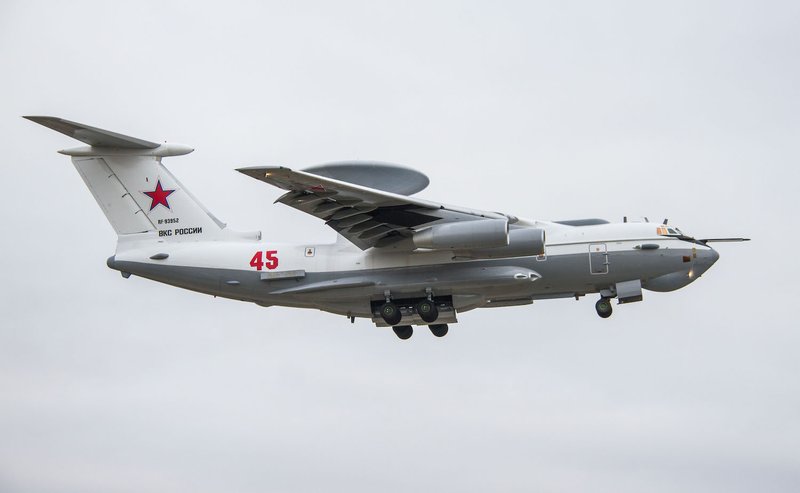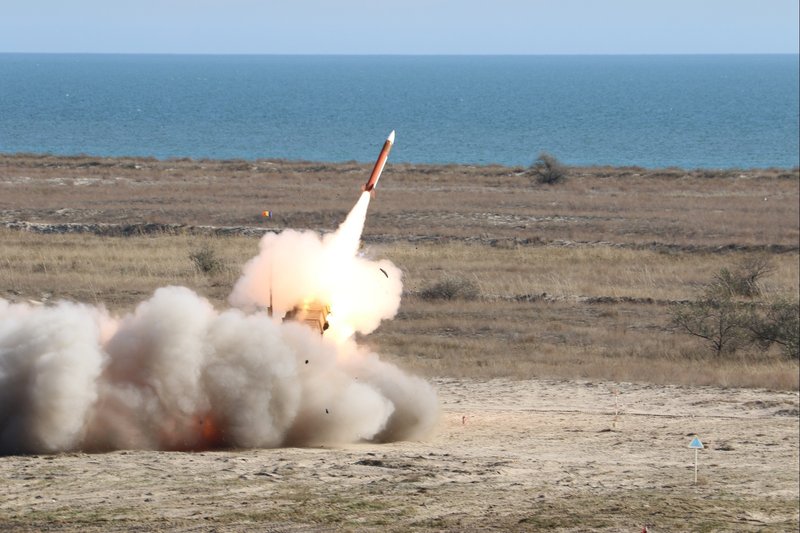Losing an eye in the sky – why Russia’s AEW capability in Ukraine is in peril
One forecast made soon after the Russian invasion of Ukraine was that the latter would quickly lose air superiority, and its ground forces would suffer a high rate of attrition from air attack. While it would be wrong to say that Moscow’s air power has been ineffectual, its impact on the conflict has been far lower and rates of loss far higher than anything predicted.
Embarrassing does not begin to describe the Russian situation, not least because more than a few of the aircraft downed so far have been modern designs on which the Russian Air Force expects to depend in the medium term... Continues below
Newsletter Sponsor:

Above: Russia reportedly has (or had) eight of the latest-standard A-50U AEW&C aircraft in service, and will be reluctant to put its remaining fleet and their crews at risk. (Photo: Rostec)
Destruction of Su-34s and 35s is bad enough, but the last month has seen a more critical loss. Likely at the hands of Patriot missiles (although the long-range S-200 has also been suggested), a Russian A-50U airborne early warning and control (AEW&C) aircraft was shot down and an Il-22M airborne command post severely damaged (at least) on 15 January.
Although reports were initially confusing and not all details have yet been revealed, this does seem to be a genuine Ukrainian victory rather than an accident or friendly fire.
Several interesting inferences can be drawn from this event. The first is that Russian forces remain unable to control the air and cannot operate with freedom, let alone impunity. After so much fighting for so long, this is a staggering failure and relatively rare in recent conflicts – usually one side manages to dominate the air war relatively rapidly.

While this campaign is extremely complex in terms of its air component, the fact remains that neither side is bending the other to its will.
The second is the gravity of such a loss. The Russian Air Force was estimated to have around eight modern A-50s so the loss even of a single example is a significant degradation in capability. Fighters can be built and delivered with relative ease, but the A-50 is a complex and costly platform, the replacement of which will undoubtedly take time. Also painful is the loss of a trained crew, which likewise will not rapidly be made good.
Next up are the circumstances of the shootdown. The A-50 was operating over the Sea of Azov, over 150km from the main line of contact. The Il-22 was even further away, over 200km from the battlefield.
Traditionally, high-value assets such as these are assigned zones where they are in minimal danger, though this cannot be entirely negated. Usually, it is roving fighters that are seen as the greatest threat and it is highly unlikely that the Russians thought a surface-to-air missile would be likely to engage these aircraft in their rear-area positions.
While the maximum range of the air defence systems used is open knowledge, identifying, targeting and homing in on an aircraft at such distance is more difficult than simple numbers and theoretical performance.
Other articles in this newsletter:
Partnership potential – Australia and Israel’s options for sixth-gen fighters
Future Vertical Lift – has the US Army learned the right lessons?
The last point is a lesson for Russia and others regarding anti-access/area denial (A2/AD) and the impact that this will have on command and control. Russia – or any other air force involved in a modern war – needs to retain a clear picture of the airspace over the battlefield. Using valuable aircraft such as these involves risk, but it is unlikely that the Russian commanders thought that the two aircraft were in danger where they were operating.
This success for Ukraine will undoubtedly be worrying for the invader. Ukrainian forces have demonstrated an ability to interfere in Russian operations far into the latter’s territory. While use of surface-to-surface weapons has been virtually continuous, victories against aerial targets at range have been extremely rare.

Above: A US-supplied Patriot surface-to-air missile is thought to have brought down the Russian A-50 earlier in January. (Photo: US Army)
Even worse for Russia, Ukraine’s air and air defence forces are re-equipping with increasingly sophisticated weapons, making this kind of incident more likely. Precisely when Russia needs detailed information on Ukrainian capability and a clear sense of what new systems are being delivered and used, it will likely have to accept a degraded picture lest another precious asset be lost.
Russian suppression of Ukrainian air defences has never been a strong part of its campaign. Putin’s forces do possess electronic attack and anti-radiation missiles, but they have not been used in the kind of concentrated effort a NATO force would likely undertake. The loss of the two aircraft plus a likely increase in fielding more capable anti-air systems by its opponent may mean that Russia will reassess its air war priorities.
Don't want to miss out on future Decisive Edge content? Make sure you are signed up to our email newsletters.











